King of the off-road: 40 years of the Mercedes G-Wagen
The Atari computer, the first Walkman music player and the iconic, slab-sided Mercedes G-Class. These three unlikely bedfellows share one thing in common – each represented the pinnacle of technology in 1979. But, 40 years later, only one has stood the test of time.

Over four decades, Mercedes’ G-Class – or G-Wagen as its more affectionately known – has built up quite a CV. The once utilitarian, ‘go-anywhere’ off-roader has circumnavigated the planet, won the gruelling Paris-Dakar Rally at the hands of Jackie Ickx and carried the Vatican City’s Holy father.
‘Whether it’s covered in mud or freshly painted, the G-Class is always a statement,' says Dr. Gunnar Güthenke, Head of the Mercedes G-Class programme at the newly minted G-Class Experience Centre in the grounds of the G’s production facility in Graz, Austria.
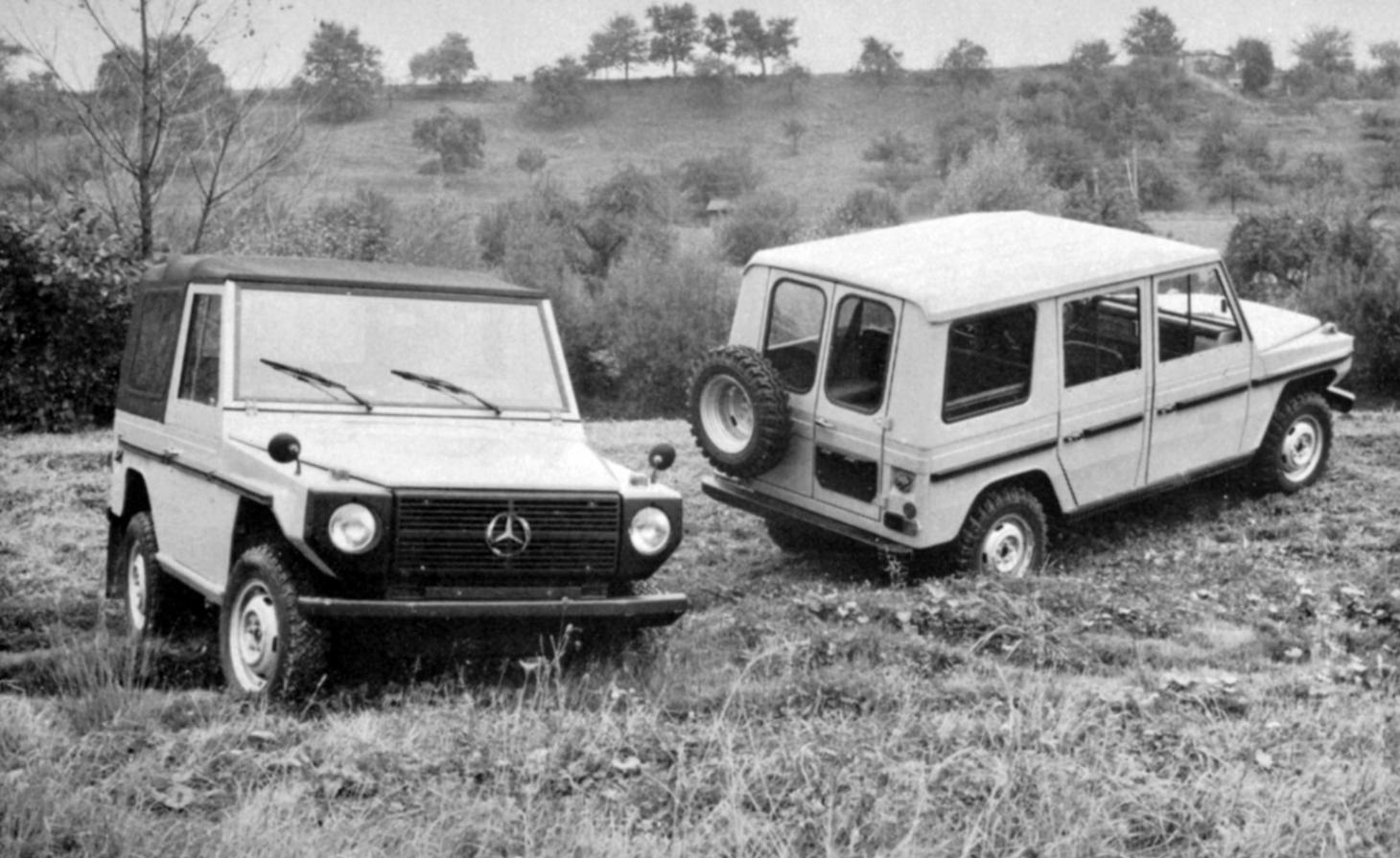
Mercedes-Benz off-road vehicle as an open vehicle with short wheelbase (2,400 millimetres) and a station wagon with long wheelbase (2,850 millimetres).
The story of one of the world’s best-loved off-roaders starts in the South of France in 1979 – the moment the G was first revealed to the media. On first impressions, the press was captivated by its old-school ladder-type frame, its chiselled jawline and the sparse but practical interior. With the option of four different engines, two wheelbase lengths and five body styles to choose from, the G-Wagon had something for every occasion. From fire truck to city runabout and everything in between, the ‘G’ was Stuttgart’s answer to the inimitable and much-admired Land Rover. Just a year after its launch, Pope John Paul II’s visit to Germany prompted the factory in Graz to produce a personal, glass-domed G-Wagen, one of the best-known ‘Popemobiles’. Marketing genius or a benevolent gift? Either way, the G-Wagen gained worldwide fame in an instant.
While most car makers refresh their product offering within the space of five years, Mercedes thought differently. After a decade of continuous, unchanged production, Merc ushered in a new era in 1989, morphing the G-Wagen into a more comfortable and refined off-roader. Despite its virtually unchanged exterior, the new G was more reflective of the affluent, town and country buyers it had come to attract. What started life as a boxy, utilitarian workhorse was fast becoming a cult classic.
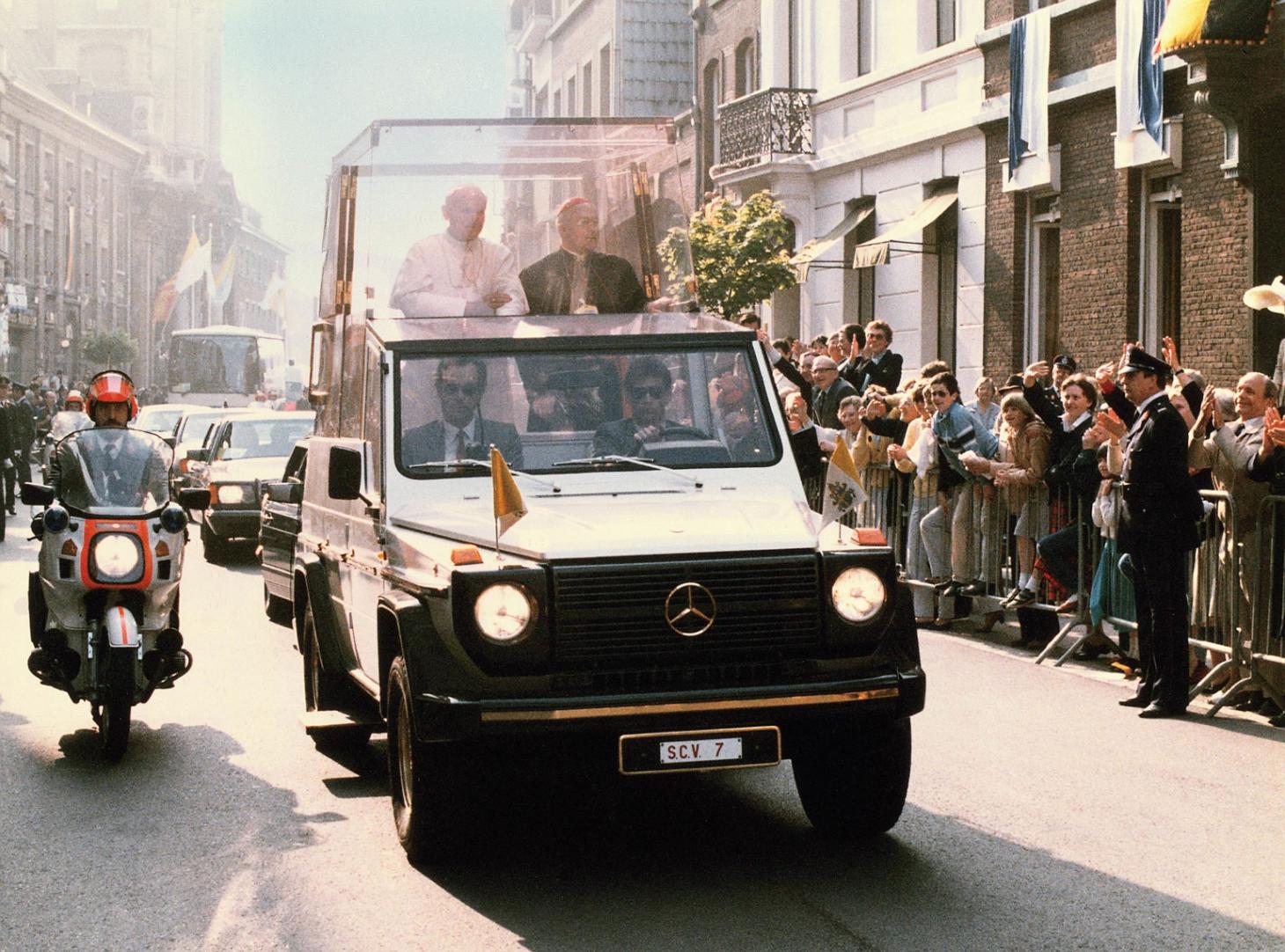
Pope John Paul II out and about in his Mercedes-Benz 230 G Popemobile, with registration number SCV 7.
With the G still charming its way into the hearts of everyone from city slickers to civil servants, the Stuttgart-based carmaker was working on something very different. In the town of Affalterbach, just a few miles north-west of Mercedes’ headquarters stood Aufrecht, Melcher and Großaspach – otherwise known as AMG. Initially developed as a stand-alone Mercedes tuning company, the outfit’s operations quickly became intertwined with the German auto giant, forming the basis of an allegiance that would go on to create some of the finest performance cars of the century. Of all Mercedes’ models, the G would be the least likely candidate for performance treatment but, in 1999, both AMG and Merc pulled the covers off the 349bhp, 5.5-litre naturally aspirated V8 powered G 55 AMG. A new niche of ballistic, performance off-roaders had been born.
After blending two oddly complementary strands of German engineering, the floodgates were open. Out poured imitators and challengers as Porsche, Land Rover and BMW brought to market Frankenstein creations that combined off-road ability with supercar performance. Mercedes and AMG had – perhaps unwittingly – started the automotive equivalent of an all-road arms race. To cut through the noise, Merc would need to think far beyond the slab-sided box it had first dreamt up in the late 1970s.
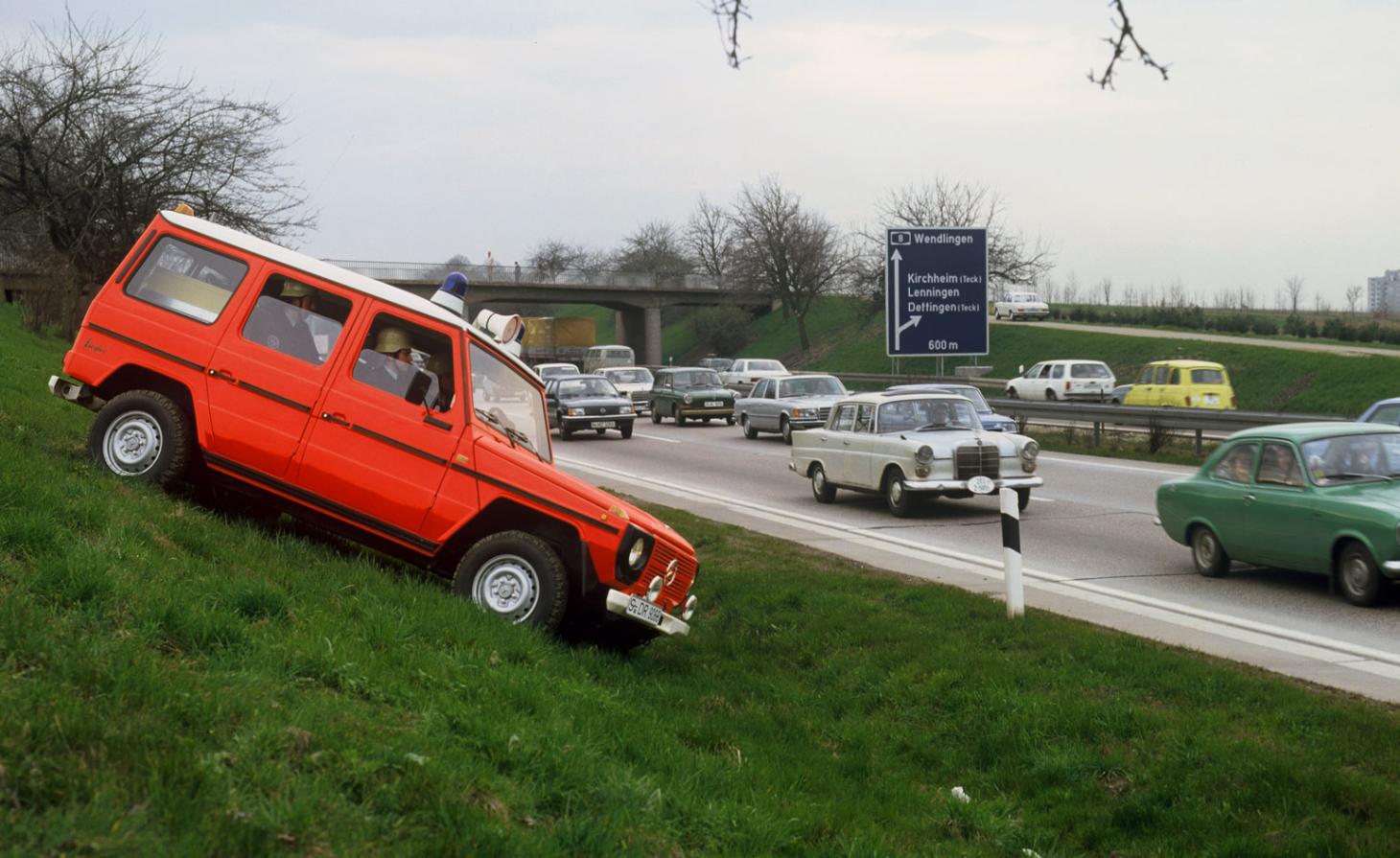
Mercedes-Benz ‘G’ model from model series 460, Station Wagon with long wheelbase employed as a fire-fighting vehicle.
Throughout the 2000s, the marque continued to push the boundaries of what was mechanically possible. 2002 saw the G-Wagen up the ante with the addition of a monstrous 6.3-litre V12 with close to 500bhp. Ten years later, the engineering experts at AMG squeezed an extra 183bhp out of the engine before launching the monstrous, six-wheel-drive G 63 AMG 6x6 in 2013. Despite its brutal appearance and all-conquering ability, there was more to come.
2017 brought about the previous generation G-Wagen’s swansong – the open-top Mercedes-Maybach G 650 Landaulet. Limited to 99 vehicles, the G 650 was the road-going equivalent of a superyacht, complete with drop-top canvas roof, limousine levels of luxury and nautical proportions. With a V12 bi-turbo engine from AMG, a length of 5.3meters and a height of 2.2meters, the G 650 is beyond comparison – a rare glimpse of true automotive silliness from the Stuttgart powerhouse.
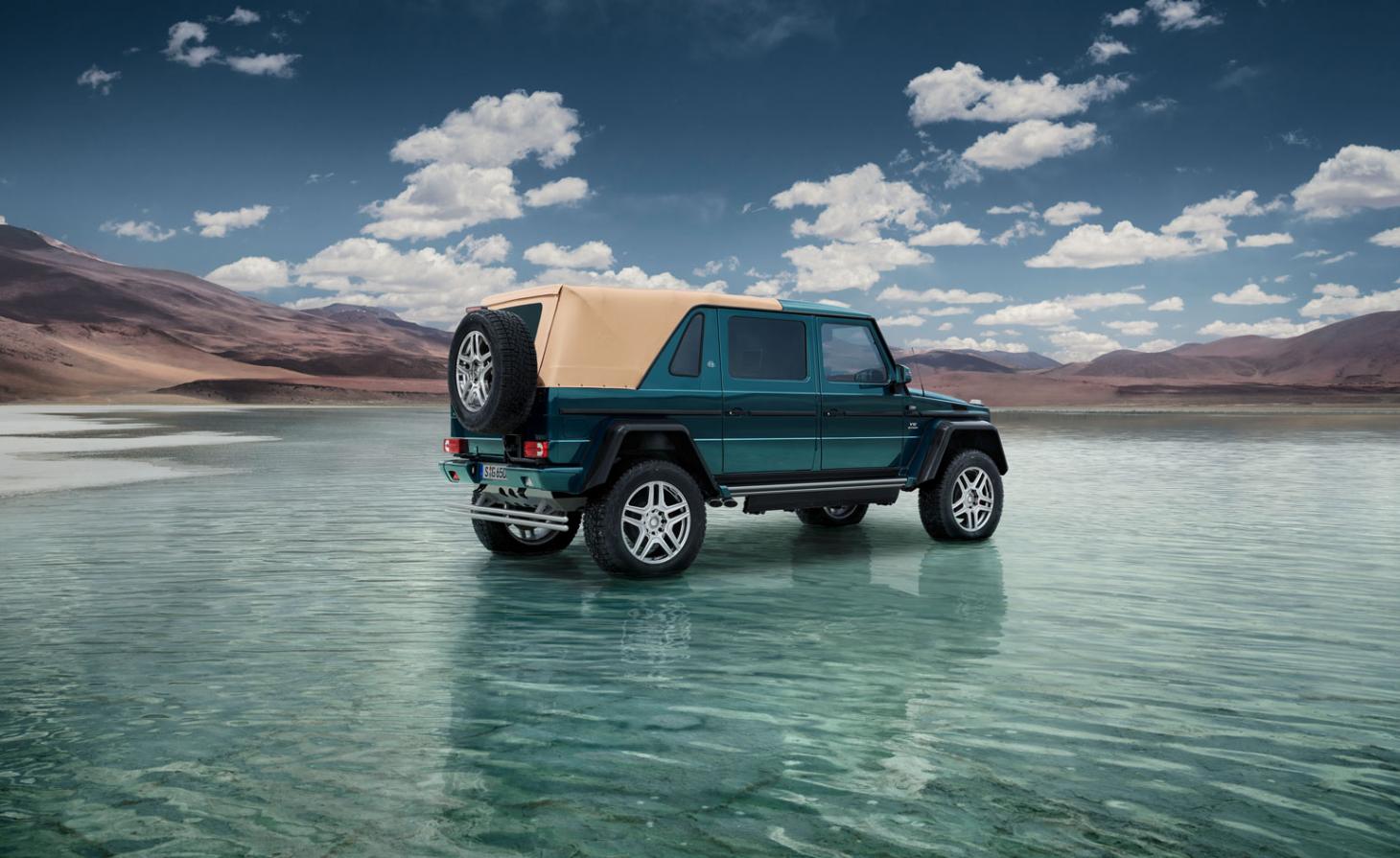
Mercedes-Maybach G 650 Landaulet from model series 463, a limited edition of 99 vehicles. Photography from 2017.
Now, in 2019, the G-Wagen enters its 40th year in production. Since the first models rolled off the very same production line in Graz, each bears the ‘Schöckle-proved’ hallmark, nestled in the doorframe – a nod to the infamous, 1445-meter mountain in Graz, where every new development made on the G undergoes more than 2,000km of testing.
For four decades, the G has been turning heads, churning through mud and even frequenting battlefields the world over. Despite that, it’s believed around 80 per cent of them are still roaming the streets to this day. While its eccentric iterations are novel distractions, at its core is a design that’s barely changed in just short of half a century. A design classic formed in response to function but developed by demand and desire. Like it or loathe it, if the past four decades are anything to go by, the Mercedes G-class is here to stay.
INFORMATION
Receive our daily digest of inspiration, escapism and design stories from around the world direct to your inbox.
Mercedes G-Class, from £94,580. mercedes-benz.co.uk
Rory is a seasoned freelance journalist covering all things cars, motorsport, yachts, travel and transport for Wallpaper* as well as the Financial Times, Telegraph and Robb Report. Regularly quizzing CEOs, racing drivers and engineers on everything from the wheels up, he also test drives the latest cars and greatest classics for news stories, features and reviews. @roryfhsmith
-
 ‘I want to bring anxiety to the surface': Shannon Cartier Lucy on her unsettling works
‘I want to bring anxiety to the surface': Shannon Cartier Lucy on her unsettling worksIn an exhibition at Soft Opening, London, Shannon Cartier Lucy revisits childhood memories
-
 What one writer learnt in 2025 through exploring the ‘intimate, familiar’ wardrobes of ten friends
What one writer learnt in 2025 through exploring the ‘intimate, familiar’ wardrobes of ten friendsInspired by artist Sophie Calle, Colleen Kelsey’s ‘Wearing It Out’ sees the writer ask ten friends to tell the stories behind their most precious garments – from a wedding dress ordered on a whim to a pair of Prada Mary Janes
-
 Year in review: 2025’s top ten cars chosen by transport editor Jonathan Bell
Year in review: 2025’s top ten cars chosen by transport editor Jonathan BellWhat were our chosen conveyances in 2025? These ten cars impressed, either through their look and feel, style, sophistication or all-round practicality
-
 Gorden Wagener leaves the helm of Mercedes-Benz design after 28 years with the company
Gorden Wagener leaves the helm of Mercedes-Benz design after 28 years with the companyThe German designer is stepping down from the role of chief design officer at Mercedes-Benz. We look back at his influence and impact on the world of automotive and luxury design
-
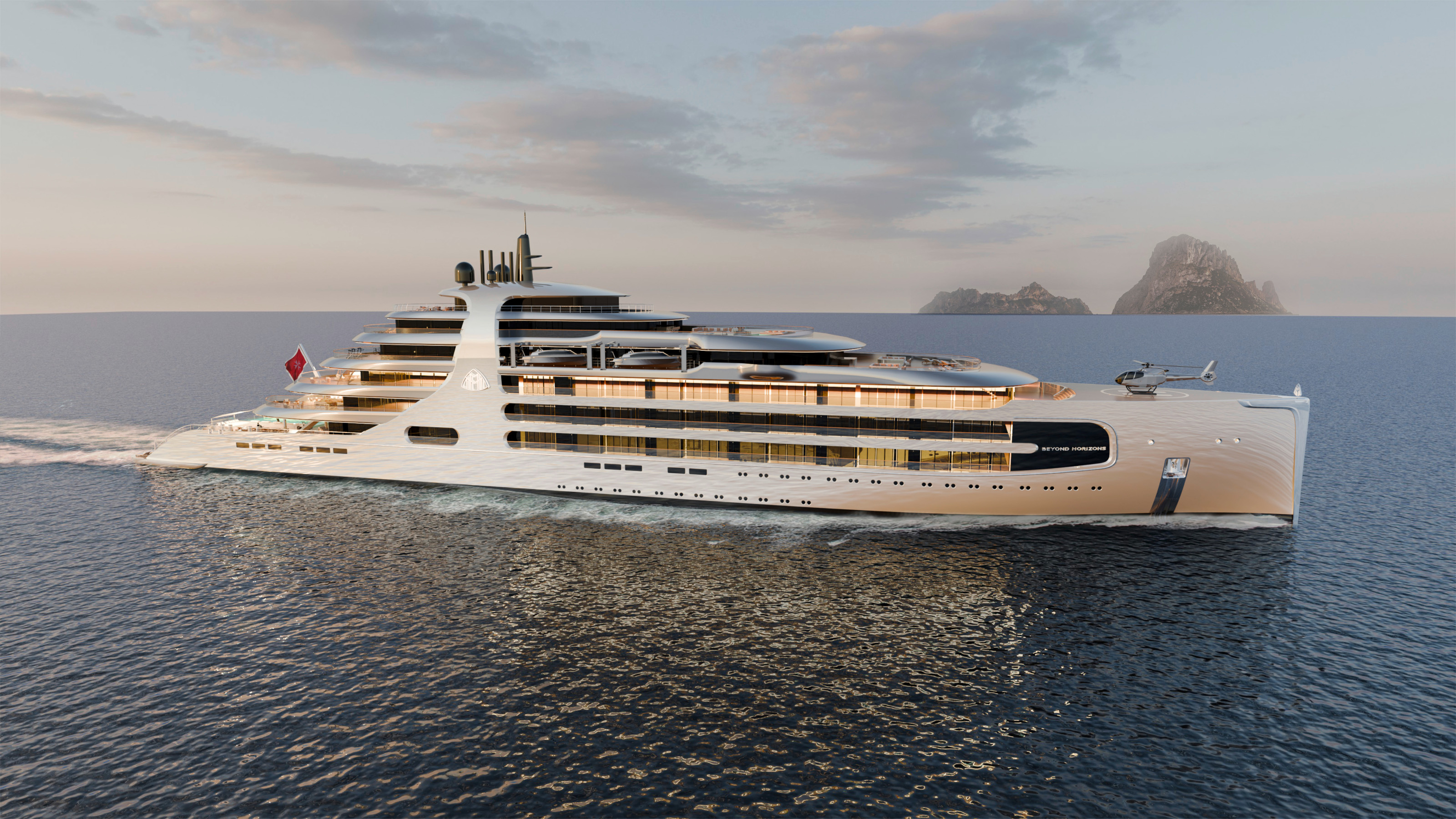 The Maybach Ocean Club is a floating members’ club for the super-rich
The Maybach Ocean Club is a floating members’ club for the super-richMercedes-Benz Design has announced the upcoming Maybach Ocean Club, a ship-based enclave inspired by automotive luxury
-
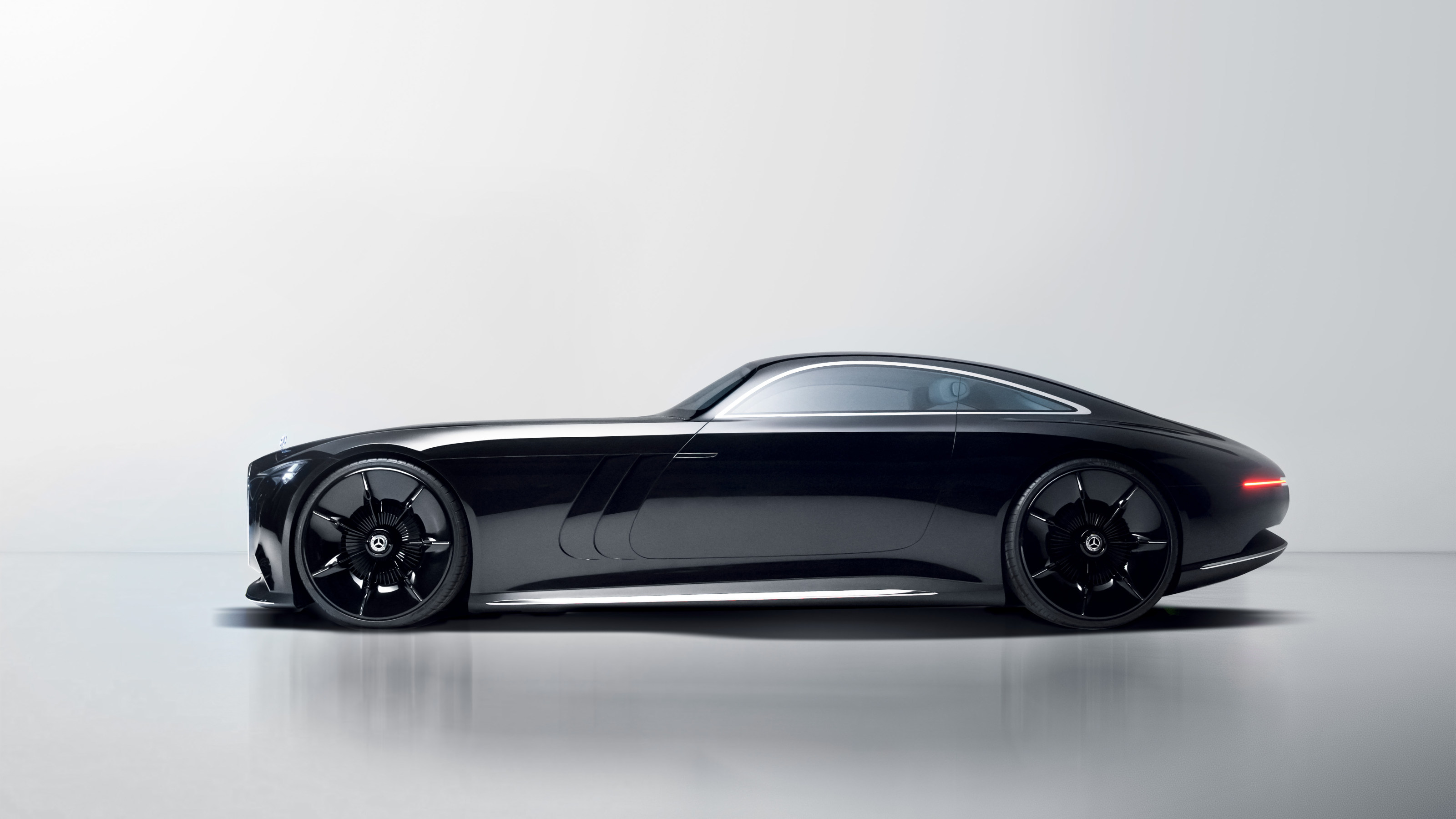 The Mercedes-Benz Vision Iconic is automotive haute couture, a concept with cinematic style
The Mercedes-Benz Vision Iconic is automotive haute couture, a concept with cinematic styleThe Vision Iconic concept makes a play for a new approach to future luxury, blending art-deco excess with neo-gothic trimmings and monumental scale
-
 All the new electric cars and concepts revealed at Munich’s IAA Mobility 2025
All the new electric cars and concepts revealed at Munich’s IAA Mobility 2025Munich’s alternative motorshow is now in its third iteration, combining a traditional exhibition space with a conference and large-scale public activations on the streets of the city
-
 How will future car interiors take shape? London studio NewTerritory has a vision for automotive design
How will future car interiors take shape? London studio NewTerritory has a vision for automotive designDesign studio NewTerritory has set up a new automotive division to explore the future of car interiors. We interrogate the team
-
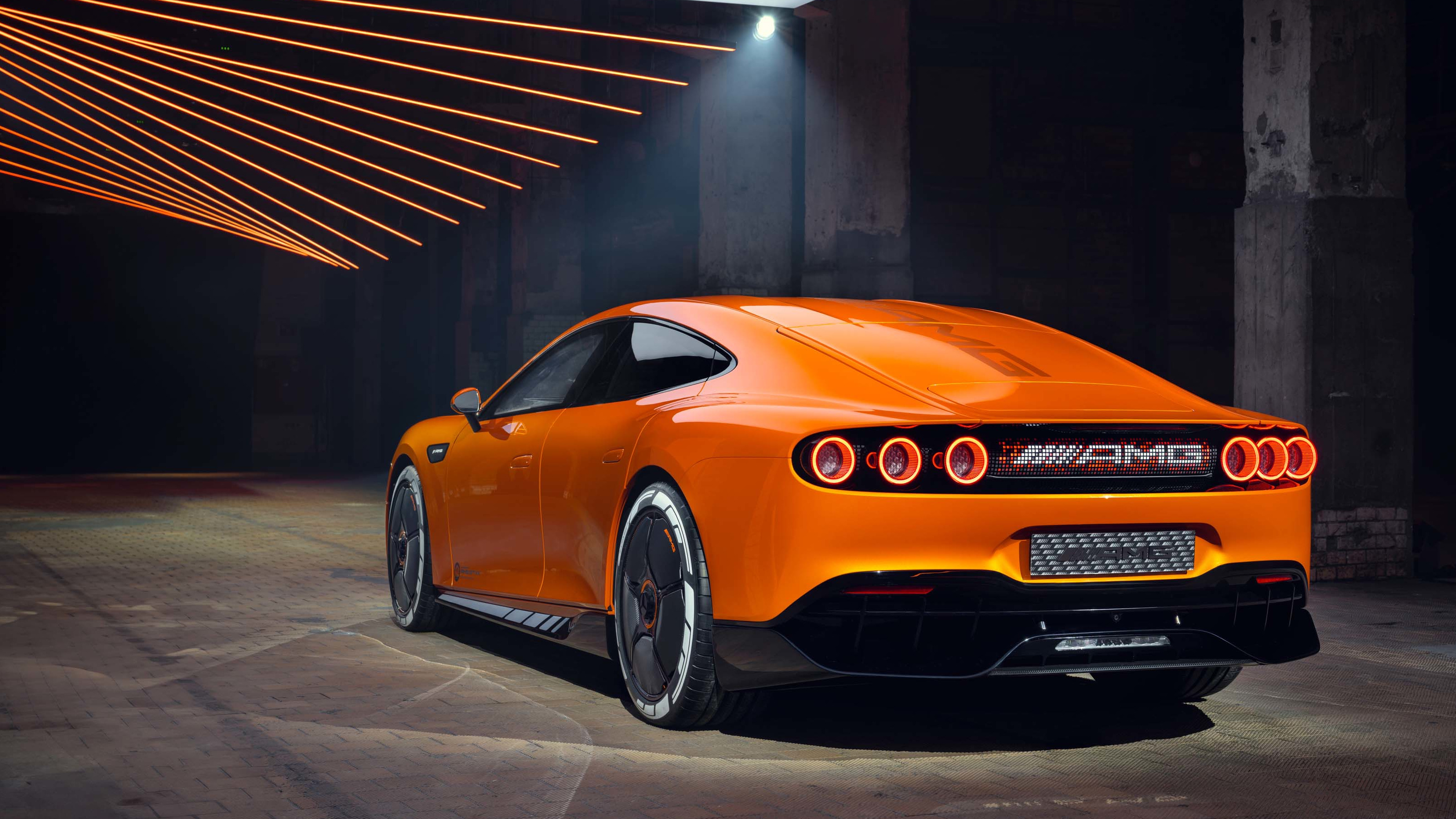 A mighty concept coupé from Mercedes-AMG rewrites the electric performance car rulebook
A mighty concept coupé from Mercedes-AMG rewrites the electric performance car rulebookThe Mercedes-AMG Concept AMG GT XX is a four-door coupé that explores new approaches to battery tech, brake cooling and aerodynamics. As a sign of things to come, it can’t be ignored
-
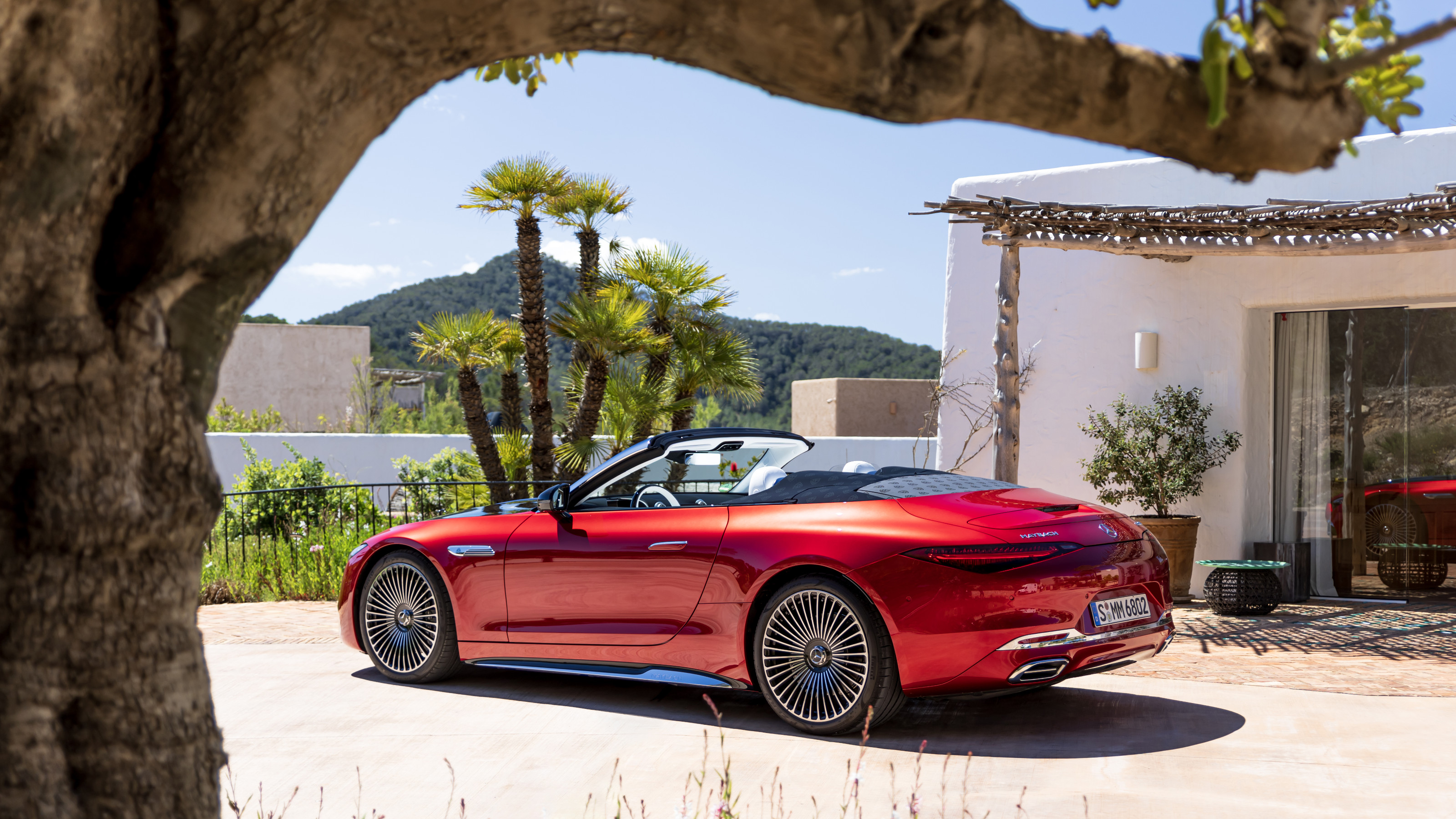 The Mercedes-Maybach SL 680 Monogram Series is an eyeful as well as a mouthful
The Mercedes-Maybach SL 680 Monogram Series is an eyeful as well as a mouthfulMercedes-Maybach’s first-ever sports car is comprehensively ‘wallpapered’ in the brand’s double-M design. We sampled this monogrammed machine on the coast of Ibiza
-
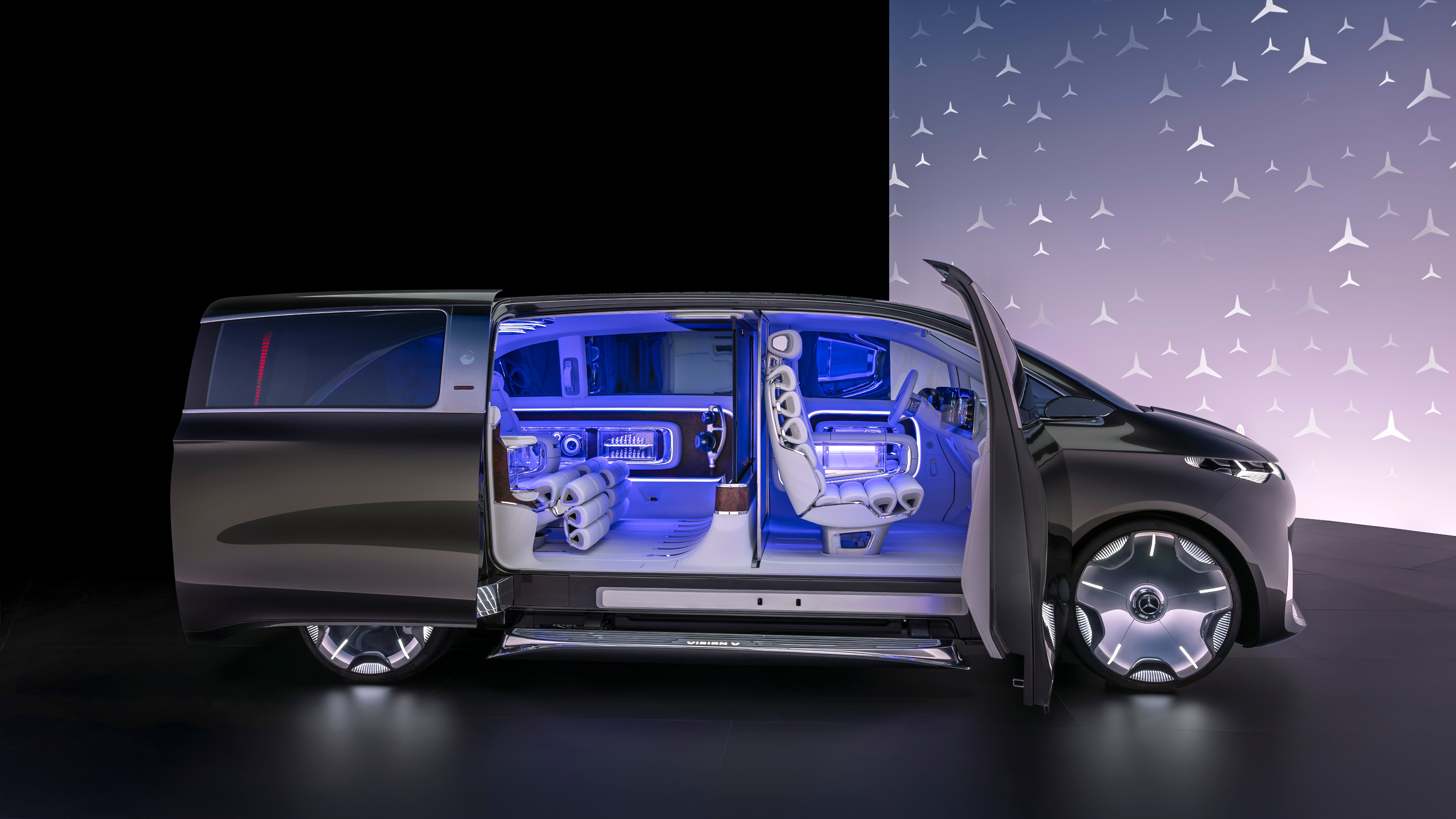 Mercedes-Benz previews its next-gen people mover with an ultra-luxury EV concept
Mercedes-Benz previews its next-gen people mover with an ultra-luxury EV conceptThe Mercedes-Benz Vision V Concept is an art deco picture palace on wheels, designed to immerse passengers in parallel worlds as they travel